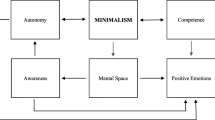Abstract
In this paper two fears about health promotion are identified. The first concerns the ability to choose between proliferating expert advice, and the second concerns the fear of government interference in personal life. The paper goes on to outline the current place of health promotion in British health policy, and to discuss the relevance of recent research on health beliefs. The paper argues that work on ‘lay epidemiology’ has been overlooked by both critics and supporters of health promotion. From this vantage point the fears about health promotion can be seen to be exaggerated.
Similar content being viewed by others
References
For a review of preventive strategies see, for example, Doll, R. (1983). Prospects for prevention.British Medical Journal 286, 445–453.
Nordenfelt, L. (1991).Towards a Theory of Health Promotion: A Logical Analysis, Linköping Collaborating Centre, Department of Health and Society, University of Linköping, Linköping, Sweden.
Ashton, J. and Seymour, H. (1988).The New Public Health: The Liverpool Experience, Open University Press, Milton Keynes.
McQueen, D. V., quoted in Bunton, R. and Macdonald, G. (eds) (1992).Health Promotion: Disciplines and Diversity, Routledge, London.
For a view of ‘panic cultures’ see Kroker, A. and Cook, D. (1986).The Postmodern Scene, Macmillan, London.
Berger, P. et al (1992).Health, Lifestyle Environment: Countering the Panic, Social Affairs Unit, London.
Williams, S., Calnan, M., Cant, S. L. and Coyle, J. (1993). All change in the NHS? Implications of the NHS reforms for primary care prevention.Sociology of Health and Illness 15(1), 43–67.
Beattie, A. (1991). Knowledge and control in health promotion: a test case for social policy and social theory. In,The Sociology of the Health Service, ed. by J. Gabe, M. Calnan and M. Bury. Routledge, London.
Beattie, A. (1991). As reference 8. For a recent discussion of a more contextual approach to health promotion and lifestyle, with special reference to smoking, see Oakley, A., Brannen, J. and Dodd, K. (1992). Young people, gender and smoking in the United Kingdom.Health Promotion International 7(2), 75–88.
Williams, S. J., Calnan, M. and Cant, S. (1991). Health promotion and disease prevention in the 1990s.Medical Sociology News 16(3), 20–29.
Harrison, S., Hunter, D. J. and Pollitt, C. (1990).The Dynamics of British Health Policy, Unwin Hyman, London.
Killoran, A. (1993). Pacemaker.Health Service Journal 18th February, 26–27.
Herzlich, C. (1973).Health and Illness, Academic Press, London.
Blaxter, M. (1983). The causes of disease: women talking.Social Science and Medicine 17(2), 59–69.
Blaxter, M. (1990).Health and Lifestyles, Routledge, London.
Pill, R. and Stott, N. (1982). Concepts of illness, causation and responsibility.Social Science and Medicine 16(1), 43–52.
Pill, R. and Stott, N. (1985). Choice or chance: further evidence on ideas on illness and responsibility for health.Social Science and Medicine 20(10), 981–991.
Davison, C., Davey Smith, G. and Frankel, S. (1991). Lay epidemiology and the prevention paradox.Sociology of Health and Illness 3(1), 1–19.
Davison, C., Frankel, S. and Davey Smith, G. (1992). The limits of lifestyles: reassessing ‘fatalism’ in the popular culture of illness prevention.Social Science and Medicine 34(6), 675–685.
Heartbeat Wales (1989). See Heartbeat Wales: new horizons for health promotion in the community—the philosophy and practice of Heartbeat Wales. In,Changing Ideas in Health Care, ed. by D. F. Seedhouse and A. Cribb, John Wiley & Sons, Chichester.
Giddens, A. (1991).Modernity and Self-Identity: Self and Society in the Late Modern Age, Polity Press, London.
Bury, M. R. (1982). Chronic illness as biographical disruption.Sociology of Health and Illness 4, 167–182.
Bury, M. R. (1991). The sociology of chronic illness: a review of research and prospects.Sociology of Health and Illness 13(4), 451–468.
Rose, G. (1985). Sick individuals and sick populations.International Journal of Epidemiology 14, 32–38.
Author information
Authors and Affiliations
Additional information
This paper is based on a talk given at a Symposium on Health Promotion at the University of Linköping, Sweden, April 1993.
Rights and permissions
About this article
Cite this article
Bury, M. Health promotion and lay epidemiology: A sociological view. Health Care Anal 2, 23–30 (1994). https://doi.org/10.1007/BF02251332
Issue Date:
DOI: https://doi.org/10.1007/BF02251332




